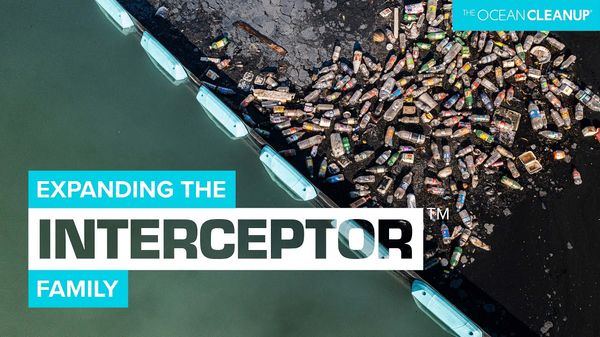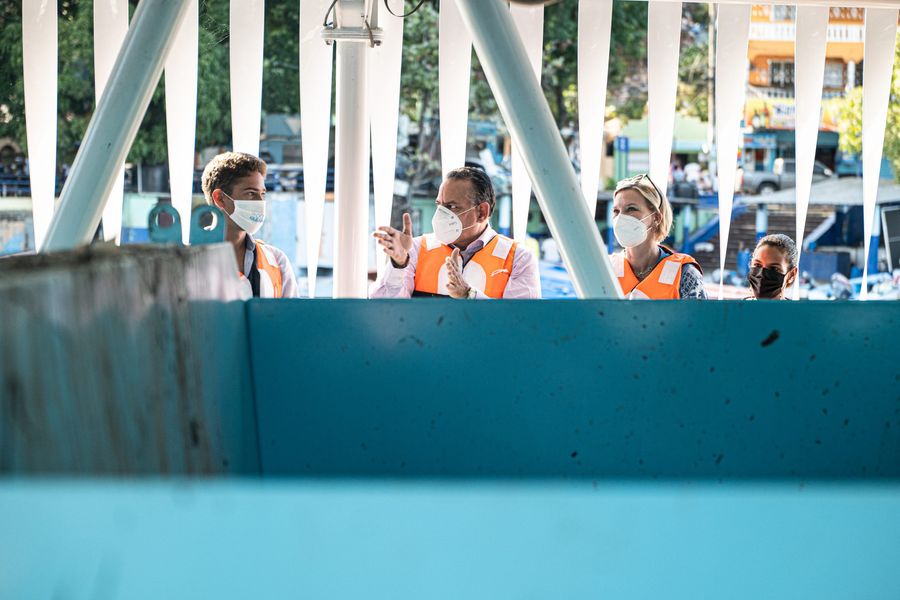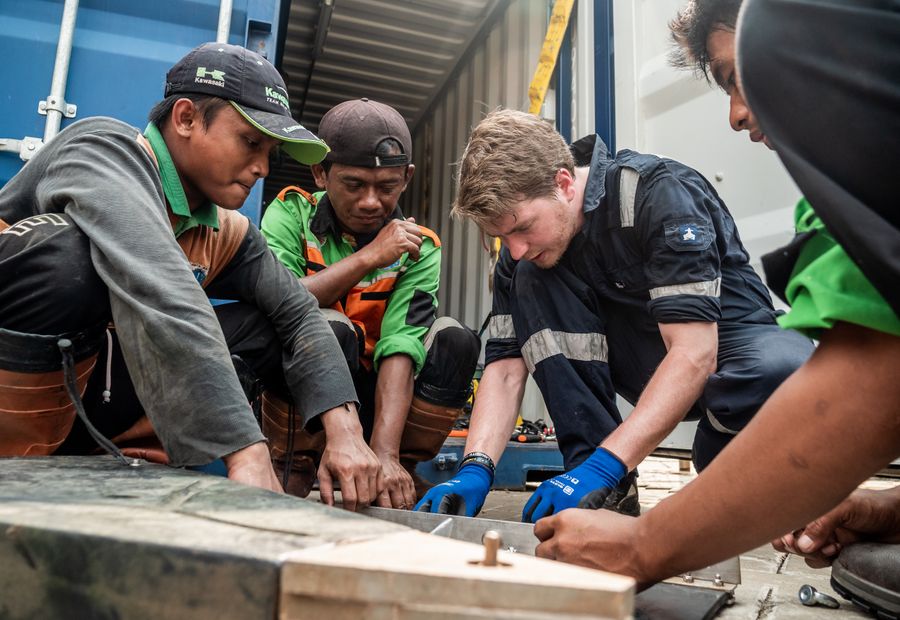
To rid the oceans of plastic, we need to clean up what is already polluting them, along with stopping new plastics from entering, including via rivers. Our timeline to tackle polluting rivers progresses through five phases: Feasibility, Development, Validation, Scale-Up, and Stability.
TEAMING UP TO SCALE UP
The biggest key to success in tackling rivers is forming the right partnerships. Unlike our efforts in the ocean – where we operate in international waters that have no specific national governance, and where we maintain full ownership of cleanup operations – the river intervention landscape is much more extensive. During the Validation phase, it is essential that we team up with entities who can assist with research, implementation, manufacturing, operations, and more – each playing a huge role in our road to success.
In June 2021, the Coca-Cola Company became our first global implementation partner for rivers. They also assist with offering expertise on local waste handling, sorting, and the recycling of waste.
In December 2020, we announced a global manufacturing partnership with Finnish firm Konecranes. This partnership brings many benefits, including the ability to rapidly produce, then deploy our Interceptor Original technology to global locations.
Alliances with local stakeholders are also imperative. Wherever an Interceptor is placed, we work aside organizations such as:
- Local governments who help with permitting and facilitate placement in rivers
- NGOs who educate communities and neighborhoods
- Local operators who train to take over daily Interceptor operations
- Regional funders and sponsors who help accelerate deployment and build consortia
On-the-ground partners and team leaders may also assist with Interceptor deployment and installation. Their hands-on help is often instrumental in lining up operators, as well as helping facilitate waste management procedures.
Our intervention is an end-of-the-line solution, to prevent damage to the oceans as soon as possible. This helps buy time for the local communities to work on improving awareness, infrastructure, and waste management facilities.
TECHNOLOGY SCALABILITY AND A GROWING FAMILY OF INTERCEPTOR SOLUTIONS
With such a large number of polluted rivers to tackle, it is necessary that our technology is scalable. Our Interceptor Original is emblematic of this: its Gen. 3 blueprint streamlines series production for our manufacturing partners, and it achieves a reduction in production costs.
At the same time, there isn’t a one-size-fits-all solution. Every river is different – factors such as width, depth, flow speed, debris composition, seasonality, and tides all influence what to deploy, as well as the mode of operation. We need a versatile toolkit of technologies from which to choose.

Aside from the Interceptor Original, we have developed the Interceptor Tender and Interceptor Barrier. The Interceptor Barriers trap and contain debris coming from gullies, while the Interceptor Tender is used to scoop up this debris, then transport it to designated offloading points near each site. Further, our current fleet includes the Interceptor Barricade and Interceptor Guard. In late May 2023, we installed the Interceptor Barricade in the Rio Las Vacas, Guatemala, to stop the annual trash tsunamis during the rainy season. This concept features two booms: one upstream to handle most of the pressure and waste, and one downstream to catch any missed plastic. The Interceptor Guard is specifically suited for shallow waters, as it can beach without structural impact. The Interceptor Guard can also be used in combination with an Interceptor Barrier, as a “no-return boom”.
JOIN US IN THE WORLD’S LARGEST CLEANUP
Tackling the world’s 1000 most polluted rivers is a massive undertaking. To do this, we need the help of global and local partners. If you are interested in helping to close the tap on ocean plastic pollution, contact us.




